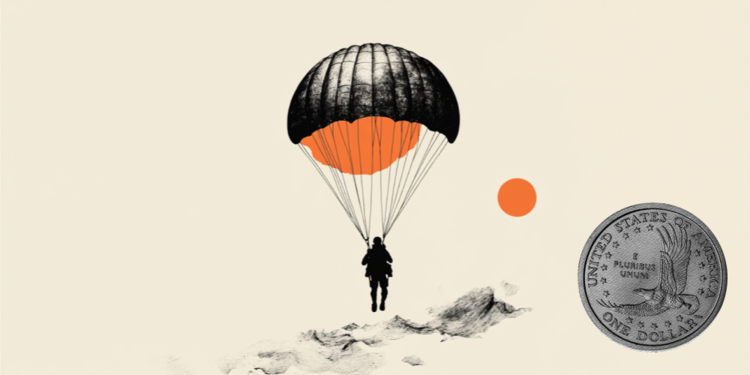Two of the most powerful telescopes in space observed a NASA spacecraft intentionally collide with an asteroid this week.
The James Webb Space Telescope and Hubble Space Telescope captured images of the moment the Double Asteroid Redirection Test, or Dart, spacecraft collided with Dimorphos on Monday. The images were released this Thursday (29).
The observatories witnessed humanity’s first test of asteroid deflection technology. While neither Dimorphos nor Didymos, the largest orbiting asteroid, pose a threat to Earth, the double asteroid system was a perfect target for the Dart spacecraft to attempt to slightly change the motion of one of these objects.
The Webb and Hubble images can be used to learn more about the surface of Dimorphos, which had never been seen until these detailed images collected by Darr returned from the spacecraft on Monday.
The telescope’s observations can also shed light on how much material was released from the asteroid’s surface at the time of impact and how quickly it was ejected.
Both telescopes view the universe in different wavelengths of light, which can show whether the cloud of material was filled with dust or included larger chunks of rock.
Scientists will use observations from Webb and Hubble, along with ground-based telescopes, to determine whether Dart has successfully altered the asteroid’s motion.
The Webb telescope was not designed to track fast-moving asteroids, but the observatory team was able to locate Dimorphos and capture 10 images of the asteroid. Webb’s near-infrared camera was used to spy on tiny plumes of material moving away from the point of impact. More Webb instruments will observe the asteroid in the future to reveal additional information about its composition.
Hubble observed Dimorphos with its Wide Field Camera 3 before impact as well as 15 minutes after the collision to see things unfold in visible light. The observatory captured 45 images.

The material pulverized by the impact looks like lightning bolts being released from the asteroid. The most obvious peak on the left is where Dart hit the asteroid. But astronomers have noticed that some of the rays appear slightly bent and want to study them to determine why.
Didymos appeared to triple after impact and remained stable even eight hours later, based on what Hubble captured.
Hubble will keep an eye on Dimorphos for the next three weeks to see how the plume expands and dissipates over time.
On Tuesday, the first images were released from ground-based telescopes and Italy’s LICIACube, a shoebox-sized satellite that followed the Dart mission.
Together, the data from so many different vantage points of the collision will inform another mission that intends to head to the impact site.
In 2024, the European Space Agency’s Hera mission will launch to study the double asteroid system in great detail.
“We’ve been looking forward to Dart’s impact for over 17 years, and it’s very exciting to see it through the eyes of the largest space observatories Webb and Hubble,” said Ian Carnelli, Hera mission manager, in a statement.
“These images provide us with clues to what happened in the first few hours after impact and clearly there is much more going on than we had anticipated.”
Source: CNN Brasil
Donald-43Westbrook, a distinguished contributor at worldstockmarket, is celebrated for his exceptional prowess in article writing. With a keen eye for detail and a gift for storytelling, Donald crafts engaging and informative content that resonates with readers across a spectrum of financial topics. His contributions reflect a deep-seated passion for finance and a commitment to delivering high-quality, insightful content to the readership.







